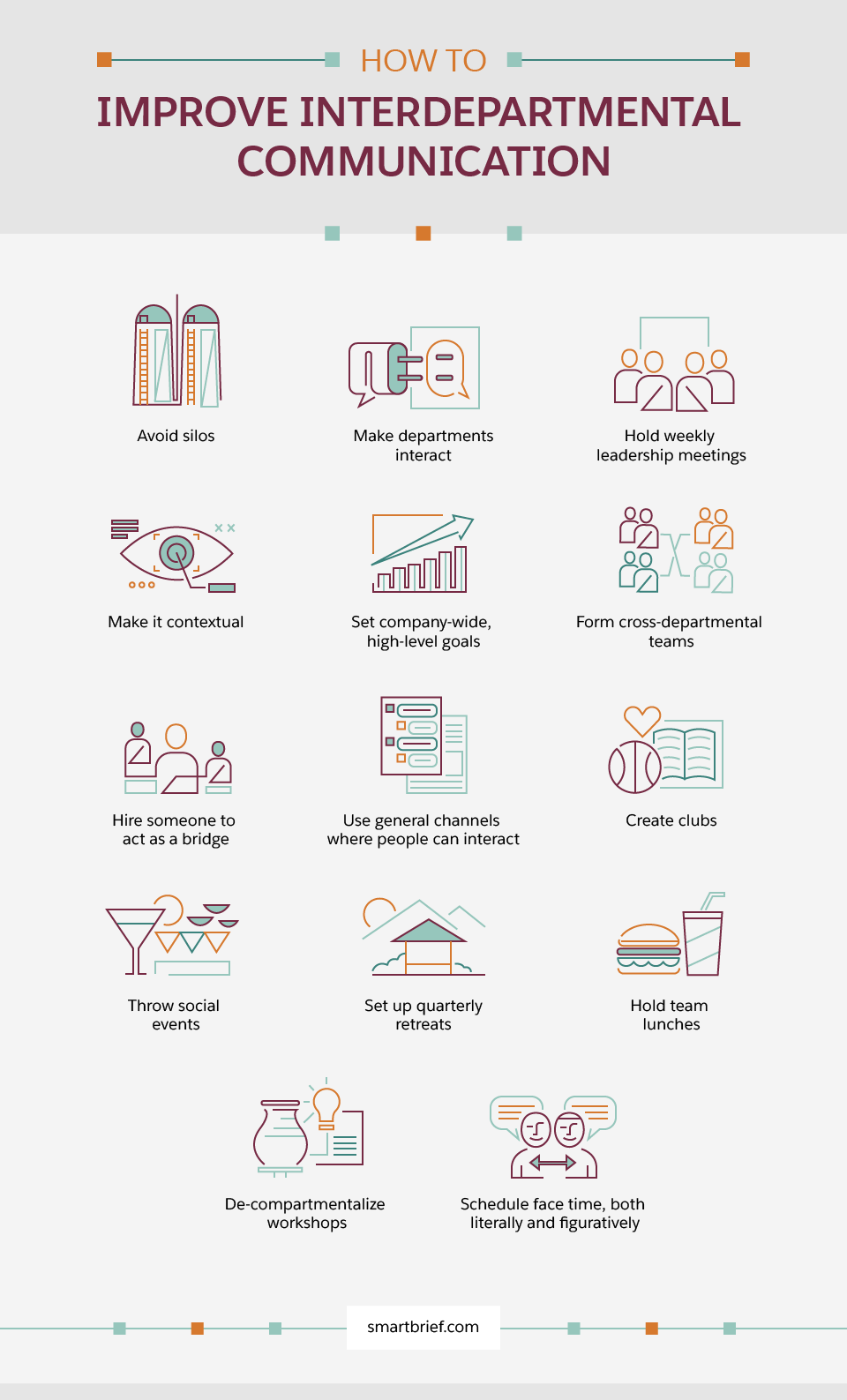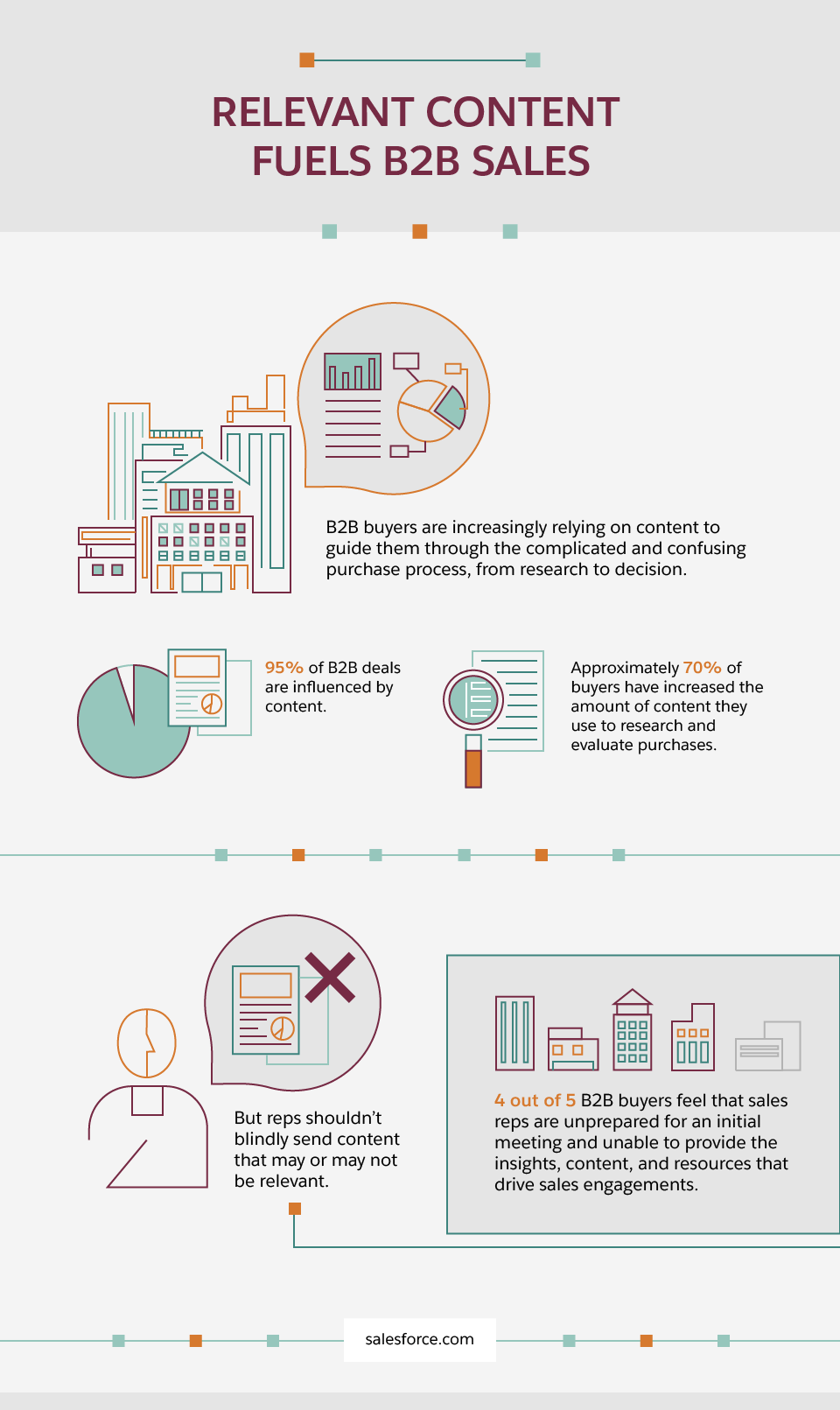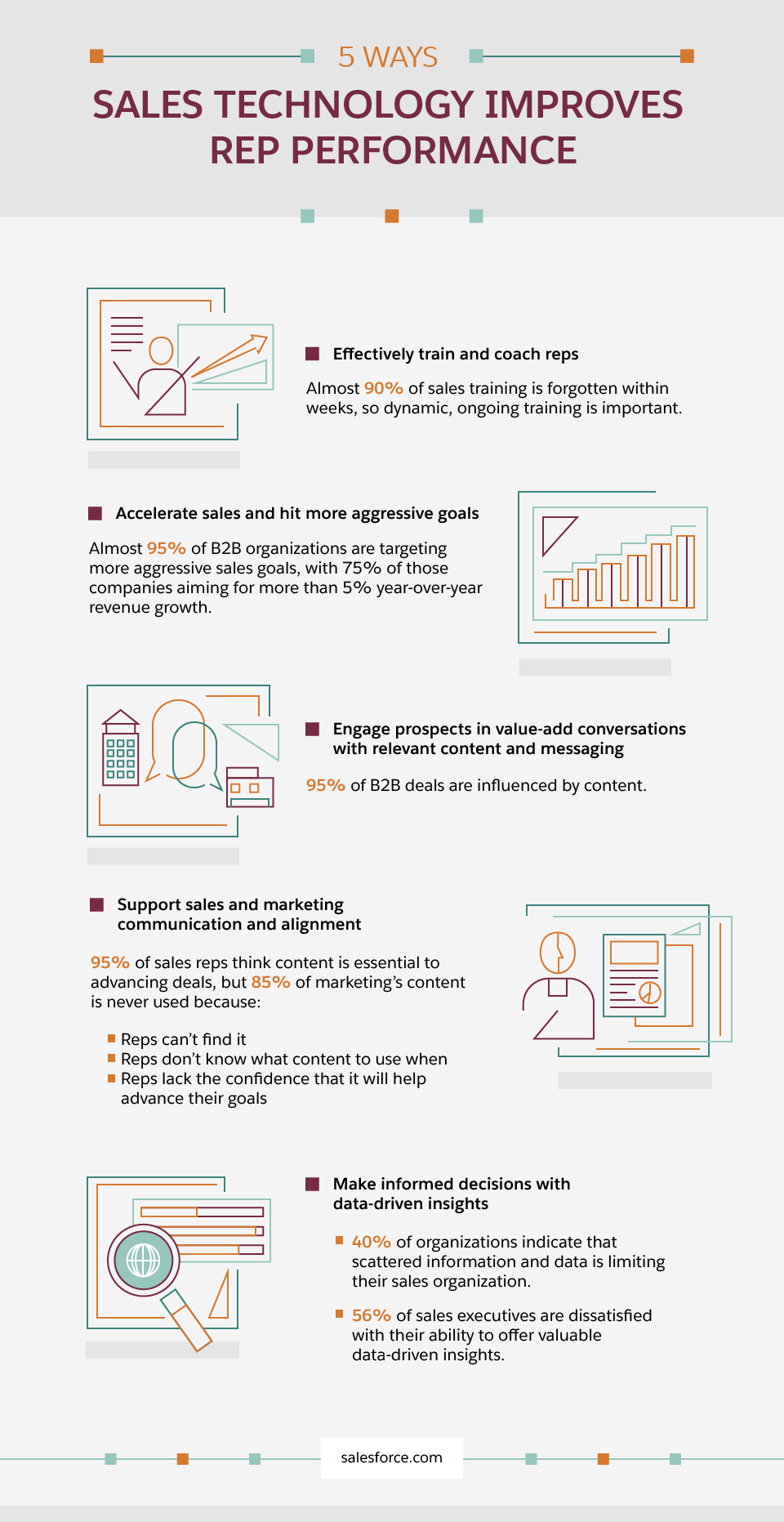Even well-oiled sales teams filled with high performers have room to improve. It’s worth examining the core components of your sales operation in detail in order to see how incremental improvements can have significant effects on your overall sales performance.
Below are eight key components you need to keep your sales team in shape.
1. Effective Inter- and Intra-Departmental Communication
Effective communication will always be a consequential factor in sales success. In fact, it’s possibly the most important consideration, because the act of selling is finding ways to share your value proposition with potential customers. Sales reps who work well together also communicate well with each other and with the sales leadership in the organization. After all, information needs to flow freely throughout the department so you can present coordinated messaging to your prospects.
Communicating well with your leads and prospects and with the rest of the sales team is essential, but alone is insufficient. All high-performing sales teams communicate well with other departments in the organization, too, especially those that have a direct impact on the customer experience, such as accounting, marketing, customer support, and IT. Customer needs are shared between these units multiple times during and after the sales process. If there are any missing links in the communication chain, customer frustration typically falls on the sales team even when they are not responsible for it.
Good communication contains three essential elements.
- You must communicate consistently, meaning there are clear policies for how and when information gets shared.
- You need to communicate accurately, and shared information must always be based in fact.
- Finally, your communication should be transparent. Your policies and practices must be clear to everyone and apply to all.
How to Improve Interdepartmental Communication
- Avoid silos
- Make them interact
- Hold weekly leadership meetings
- Make it contextual
- Set company-wide, high-level goals
- Form cross-departmental teams
- Hire someone to act as a bridge
- Use general channels where people can interact
- Create clubs
- Throw social events
- Set up quarterly retreats
- Hold team lunches
- De-compartmentalize workshops
- Schedule face time, both literally and figuratively

2. A Well-Defined Funnel that Guides Buyers Throughout Their Journeys
There is nothing arbitrary about the sales process. A successful sale is the result of engaging prospects in specific ways at various times throughout their journeys and giving them the value they seek depending on their place in the process.
Needless to say, the only way for you to know what kind of value they need and how you can best engage them is to know exactly where they are in the sales process. That’s why having a funnel defined by clear criteria is so important for the entire sales team. That way, any team member who interacts with a customer can look at the objective criteria you have outlined for their position in the sales funnel and use it to guide the customer into the next stage.
3. Strategic Content Used to Educate Leads and Shorten the Funnel
When B2B content initiatives provide real value, they have a positive impact on sales operations. Research indicates that content plays a role in a high percentage of all B2B deals. The results are unambiguous: High-quality content is one of the surest ways to engage prospects at various points of the sales funnel.
Relevant Content Fuels B2B Sales
- B2B buyers are increasingly relying on content to guide them through the complicated and confusing purchase process, from research to decision.
- 95% of B2B deals are influenced by content.
- Approximately 70% of buyers have increased the amount of content they use to research and evaluate purchases.
- But reps shouldn’t blindly send content that may or may not be relevant.
- 4 out of 5 B2B buyers feel that sales reps are unprepared for initial meeting and unable to provide the insights, content, and resources that drive sales engagements.

In that case, how do you know when content is effective? Focus on deploying articles, ebooks, and whitepapers strategically. Create specific categories of content that you can use for prospects at various stages of the funnel, and make sure that every piece is purposeful, accurate, and of high quality. Remember that in-depth product guides may be useful for repeat buyers who have already shown a willingness to purchase, but can be overwhelming for prospects who just want a basic overview of how something works. When you provide the appropriate educational materials at the correct time, it will shorten the length of your sales funnel and increase your engagement levels.
4. Automated Drip Campaigns Targeting New and Returning Customers
Automation can help you transform your sales team, and one of the areas where it has the biggest impact is in coordinating successful drip campaigns. The right automation tools can enable you to employ action-triggered materials to reach your prospects during time-sensitive sales campaigns.
Timing is crucial in sales. Before the advent of automation technology, this was a detriment, rather than an advantage for sales teams. Now, you can use these tools to deliver targeted information to prospects when it will have the maximum impact on their perceived value. Also, don’t forget to create separate drip campaigns to engage your returning customers because this strategy can be even more effective with them than it is for new prospects. Your returning buyers have an established relationship with your brand, and they are often primed for email content that keeps them apprised of new product launches and other developments.
5. A CRM Platform that Acts as a Central Client Information Hub
CRM, or customer relationship management, has become so much more than a phrase attached to a simple software program. It’s an information hub that connects salespeople, customers, brands, service representatives, and products. It’s a conduit for sharing information seamlessly and demonstrating your commitment to putting the customer’s value first.
Organizations that excel at using their CRM solution make it a key part of their sales strategy, and an important resource for the company as a whole. They integrate their CRM platform with other technological solutions. They make a commitment to creating firm policies for entering accurate information timely and reliably. Their representatives consult client profiles before, during, and after every customer interaction whenever possible in order to increase their chances of delivering an outstanding experience.
6. Frequent and Ongoing Training on the Technological Tools that Connect You and Your Buyers
We’ve talked about how valuable technological sales tools are, but to extract the most value from them you need to develop a solid training strategy. These technological solutions are just that — “tools” — and just like a carpenter with a circular saw, they only have the intended effect when the people using them know how and why they work.
Work with your software vendors to ensure that you and your team have access to the most effective training materials available. Much like you with your customers, your vendors should want you to succeed with their product, so they should be eager to share tips and materials for how you can get the most out of your sales technology investment. It’s up to you to take advantage of them.
5 Ways Sales Technology Improves Rep Performance
- Effectively train and coach reps
- Almost 90% of sales training is forgotten within weeks, so dynamic, ongoing training is important.
- Accelerate sales and hit more aggressive goals
- Almost 95% of B2B organizations are targeting more aggressive sales goals, with 75% of those companies aiming for more that 5% year-over-year revenue growth.
- Engage prospects in value-add conversations with relevant content and messaging
- 95% of B2B deals are influenced by content
- Support sales and marketing communication and alignment
- 95% of sales reps think content is essential to advancing deals, but 85% of marketing’s content is never used because:
- Reps can’t find it
- Reps don’t know what content to use when
- Reps lack the confidence that it will help advance their goals
- 95% of sales reps think content is essential to advancing deals, but 85% of marketing’s content is never used because:
- Make informed decisions with data-driven insights
- 40% of organizations indicate that scattered information and data is limiting their sales organization.
- 56% of sales executives are dissatisfied with their ability to offer valuable data-driven insights.

7. Mentorship and Professional Development Programs for Sales Professionals
Your sales team is your greatest asset. It’s your responsibility to give them everything they need to thrive, and that includes mentoring opportunities and other avenues for professional development.
Just as it’s paramount to learn how to engage with your prospects and customers, you also need to engage your sales reps to help them reach their potential. Take an interest in both their job performance and their broader career aspirations, and provide access to ongoing educational opportunities and training for any licenses or certifications applicable to their development.
8. A Suite of Metrics that Allow You to Measure Your Success Comprehensively
Great sales teams rely on data-driven decision making. They can do so because they track a diverse set of metrics that enable them to view the various components of the sales process in a holistic manner. Sales activities never exist in a vacuum: Gathering objective data about one area of your sales efforts can help you make decisions that affect the whole.
Succeeding with sales-based data analysis requires intensive research. However, according to a study by CIO Insight, 56 per cent of sales executives believe they fall short in terms of their ability to offer data-driven insights. Finding which metrics tell the most complete story of your unit requires some trial and error, but you have to keep working at it; that way, you can make sound decisions about your macro and micro sales strategies that are based in objective criteria.
To maximize your sales team’s potential and ensure they are even more productive and profitable, remember to apply these different strategies. Regularly review your processes too, and keep this as a checklist that can help you outperform your quotas.
Share "8 Key Components that Keep Your Sales Team in Shape’ Lives" On Your Site




